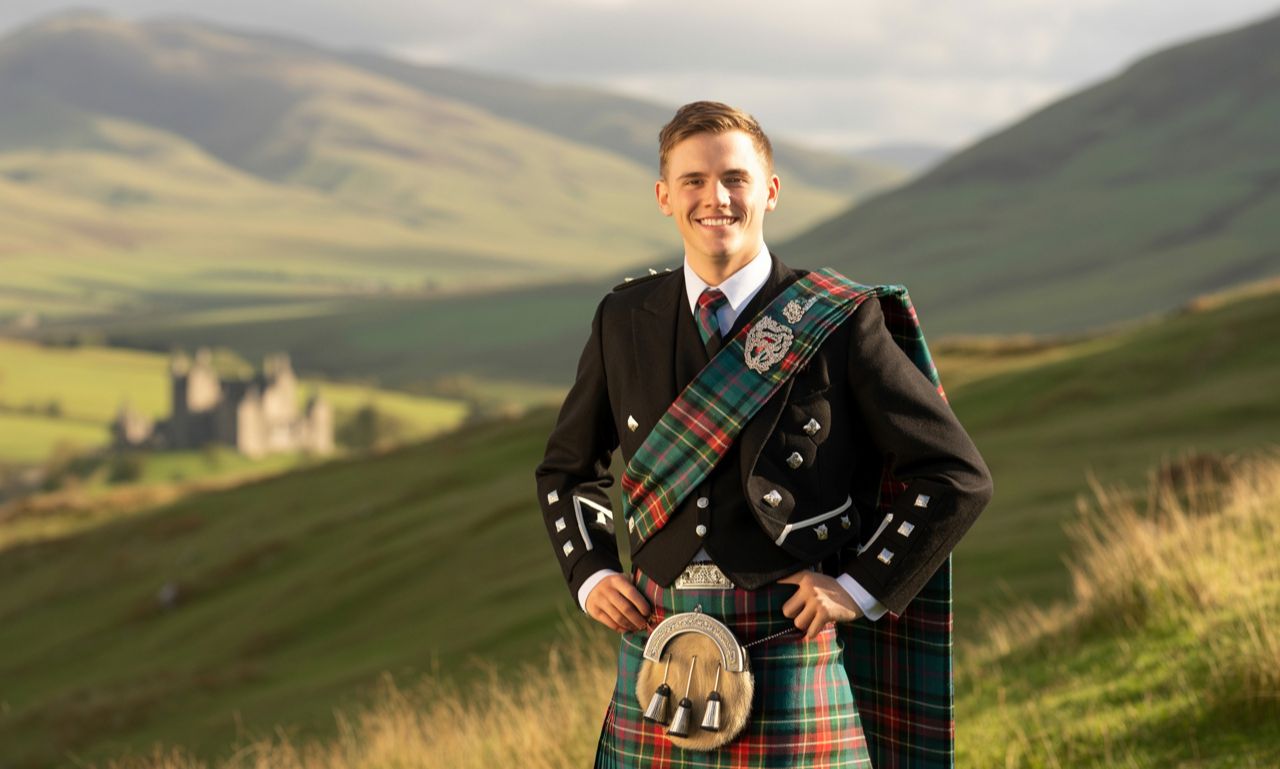In Scotland, the kilt is more than just a piece of clothing—it’s a symbol of cultural pride, family lineage, and national identity. At the heart of this enduring tradition are clan kilts, distinctive tartan patterns representing specific Scottish clans. While these kilts have roots stretching back centuries, their role in modern Scottish celebrations and events continues to evolve. From weddings and Highland games to formal ceremonies and cultural festivals, the clan kilt has found renewed purpose and prestige in contemporary life.
The Historical Significance of Clan Kilts
Clan kilts originated as identifiers of Scottish families or “clans,” with each pattern (tartan) holding unique colors and designs tied to a family name. These tartans were not only aesthetic expressions but also functional tools for recognition during battle or gatherings. As the Highland dress gained prominence, kilts became a visual shorthand for loyalty and heritage.
The Dress Act of 1746, which banned the wearing of tartan in the wake of the Jacobite uprising, only intensified the emotional connection Scots felt toward their traditional attire. When the act was repealed in 1782, a revival of clan tartans followed, laying the foundation for the role kilts play in both family heritage and national identity today.
Clan Kilts as Heritage in Modern Life
In today’s Scotland and across the global Scottish diaspora, wearing clan kilts is a powerful expression of ancestry. Whether at a wedding, a ceilidh, or a clan gathering, donning the family tartan fosters a deep sense of belonging and pride. It symbolizes the continuation of a legacy, a nod to forebears, and a commitment to cultural preservation.
For many, discovering the right kilt for sale with their ancestral tartan is a meaningful journey. The process often involves genealogy research, family archives, or consultation with tartan registries. This personal exploration connects individuals to their roots and turns the act of wearing a kilt into a profound personal statement.
Weddings and the Resurgence of Clan Kilts
Scottish weddings provide one of the most prominent stages for clan kilts today. Grooms, groomsmen, and even guests often wear their respective tartans, transforming the ceremony into a visually rich and culturally immersive experience.
Modern wedding attire frequently includes a full Highland dress—complete with kilt, Prince Charlie jacket, sporran, and sgian dubh. Yet, many couples also incorporate personalized touches, blending tradition with modern fashion trends. A groom may choose his clan tartan while incorporating his bride’s colors or motifs for unity.
Finding the right kilt for sale ahead of such occasions has never been easier. Numerous reputable retailers offer custom-made clan kilts in a wide array of tartans, ensuring authenticity and fit for life’s most cherished celebrations.
Highland Games: Tradition in Action
Few events celebrate Scottish culture as vibrantly as the Highland Games. These athletic and cultural festivals, held annually throughout Scotland and worldwide, showcase strength, music, and Highland traditions. Clan kilts are central to the spectacle, worn proudly by competitors, performers, and attendees.
Clans often set up tents at these gatherings, inviting members to connect over shared heritage. Wearing a clan kilt at the Highland Games isn’t just for aesthetics—it’s a visual declaration of ancestry, solidarity, and respect for the legacy of the Highlands.
From tossing the caber to dancing the Highland fling, participants wear their tartans with pride, reinforcing the cultural importance of kilts in community and athletic life alike.
Formal and State Occasions: Kilts with Distinction
Scottish kilts also hold a place of honor at state events, official ceremonies, and commemorations. Clan kilts are commonly seen at Burns Night suppers, St. Andrew’s Day events, and Remembrance Day parades. In many cases, the kilt is more than a dress code; it’s an emblem of national pride.
The presence of kilts at these occasions helps distinguish Scottish identity on the world stage. Diplomats, military officers, and civic leaders often don their clan tartans to represent their heritage formally and respectfully. For expats and Scots abroad, wearing the clan kilt offers a tangible link to home.
Festivals and Ceilidhs: A Revival of Community Spirit
Across Scotland and in countries with strong Scottish ties, cultural festivals and ceilidhs (traditional social gatherings) continue to celebrate Scottish music, dance, and fashion. Here, clan kilts bring a sense of occasion, authenticity, and joyful celebration.
These events often encourage attendees to wear their tartans, creating a vibrant tapestry of colors and patterns that highlight the diversity of Scottish clans. The act of dancing in a kilt, hearing the pipes, and sharing stories with fellow clan members reinforces the communal essence of these gatherings.
Modern ceilidhs might include contemporary music and lighting, but the presence of the kilt remains a constant, linking past and present in the rhythm of the reel.
The Global Reach of Clan Kilts
Thanks to a global interest in genealogy and cultural heritage, clan kilts are not confined to Scotland. Scottish descendants in the U.S., Canada, Australia, and New Zealand often wear kilts at local festivals, parades, or personal celebrations. Tartan Day, celebrated in several countries, is a prime example of how Scottish traditions continue to thrive abroad.
For many, discovering a kilt for sale that represents their ancestral clan becomes a bridge between generations and geographies. Online stores specializing in clan kilts offer worldwide shipping, custom tailoring, and access to registered tartans, making it easier than ever to participate in this cultural revival.
This global reach not only honors personal heritage but also spreads awareness of Scottish traditions, contributing to the preservation of cultural history on an international scale.
Customization and Accessibility in Today’s Kilt Market
Today’s kilt market has expanded to accommodate modern preferences, body types, and budgets. Whether you’re searching for a formal clan kilt or a casual kilt for everyday wear, the options are diverse. Retailers now offer kilts in traditional wool as well as lightweight or blended fabrics, appealing to younger wearers and those in warmer climates.
Customization options allow buyers to select tartan type, pleating style, waist measurements, and accessories. This personalized approach makes owning a kilt a more inclusive experience. From premium hand-stitched garments to more affordable machine-made options, there is a kilt for sale for every purpose and occasion.
Moreover, many online retailers provide detailed tartan lookup tools, virtual fittings, and expert consultations, ensuring a seamless and informed shopping experience.
Embracing Modernity Without Losing Tradition
While modern fashion often trends toward the minimalist or mass-produced, the kilt stands apart as a garment imbued with identity, craftsmanship, and narrative. Clan kilts bridge generations, telling stories that modern attire often lacks.
In contemporary celebrations, the kilt reminds us that honoring tradition does not mean resisting change. Instead, it offers a way to integrate cultural heritage into personal milestones and collective experiences. From vibrant city weddings to rural Highland festivals, the clan kilt remains a relevant and cherished symbol.
As younger generations explore their roots and celebrate identity through fashion, the enduring presence of the kilt ensures that Scottish heritage continues to thrive—visibly, proudly, and globally.










